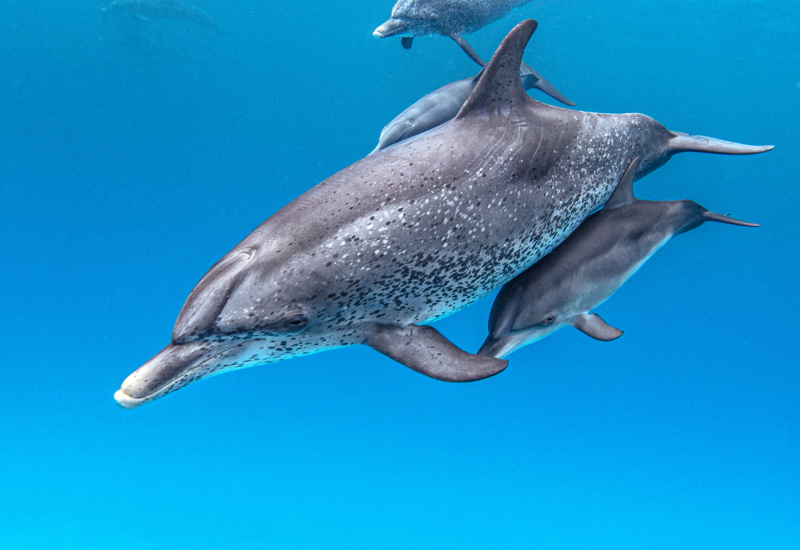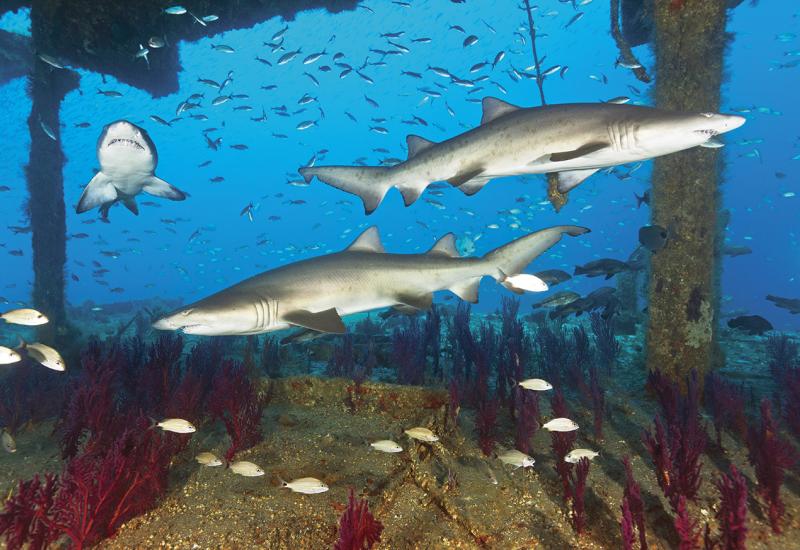What It's Like to Lull a Shark to Sleep

Lull a Shark to Sleep
Eddy Raphael
What's it like to lull a shark to sleep? You need the right shark on the right day. I start by sizing up each approaching Caribbean reef shark. I offer it a herring while gauging its movements. Is it coming in slowly? Lazily? Does it seem relaxed?
If so, then I reach out.
Those that don’t want to cooperate will shake their heads and dart away.
But some welcome the attention. Typically, the bigger the animal, the more secure it is. With females, it is 10 times easier.
Again, the animal has to want it.
If it comes in, I place my hand under its snout and start petting. Soon it will stop moving and sink. Once it has landed on the bottom, I try to become as relaxed as possible. I slow my breathing and movements as I ease the animal into a deep trance.
Then the shift happens. You can’t miss it. The shark’s snaky, twitchy movements halt. Now it becomes very still. And it becomes heavier. I can feel more weight on my hands and on my lap.
I’m able to place a shark in this state — called tonic immobility — because of the freckle-like dots on their snouts, called Ampullae of Lorenzini. These jelly-filled cups allow them to sense every ounce of electricity in the water. If you’re near them and any of your muscles contracts, they feel it. Because they’re so sensitive, the rubbing overwhelms them. It’s far too much stimulation and it limits their ability to function.
At this stage, if alone, I could pet it for hours — I love my sharks that much. Sometimes I imagine taking one home and petting it while reading a book on the couch.
But usually a crowd of divers is present, so now I gently lift up the shark by its dorsal fin and bring it around the circle. Each guest gets a chance to pet it and feel the sandpaper skin. If at any point I sense that it is becoming tense or uncomfortable, I lower it back to the sand until calmness returns.
After everyone who wants to has had a moment with the shark, I step back and slowly lift it into a vertical position. It’s not about strength or power, but rather simply staying in the moment.
The longest time a shark has stayed in this state with me is 30 minutes. To wake her, I just had to let go.
Some sharks jolt out automatically. Some awake when contact stops. Some stay in the trance-like state for a few moments.
I’ve done this thousands of times for audiences, and not as an act of bravado. Hardly. I want to inspire people’s curiosity to learn more about sharks and hopefully join the fight to protect these beautiful creatures.

Eddy Raphael
What's it like to lull a shark to sleep? You need the right shark on the right day. I start by sizing up each approaching Caribbean reef shark. I offer it a herring while gauging its movements. Is it coming in slowly? Lazily? Does it seem relaxed?
If so, then I reach out.
Those that don’t want to cooperate will shake their heads and dart away.
But some welcome the attention. Typically, the bigger the animal, the more secure it is. With females, it is 10 times easier.
Again, the animal has to want it.
If it comes in, I place my hand under its snout and start petting. Soon it will stop moving and sink. Once it has landed on the bottom, I try to become as relaxed as possible. I slow my breathing and movements as I ease the animal into a deep trance.
Then the shift happens. You can’t miss it. The shark’s snaky, twitchy movements halt. Now it becomes very still. And it becomes heavier. I can feel more weight on my hands and on my lap.
I’m able to place a shark in this state — called tonic immobility — because of the freckle-like dots on their snouts, called Ampullae of Lorenzini. These jelly-filled cups allow them to sense every ounce of electricity in the water. If you’re near them and any of your muscles contracts, they feel it. Because they’re so sensitive, the rubbing overwhelms them. It’s far too much stimulation and it limits their ability to function.
At this stage, if alone, I could pet it for hours — I love my sharks that much. Sometimes I imagine taking one home and petting it while reading a book on the couch.
But usually a crowd of divers is present, so now I gently lift up the shark by its dorsal fin and bring it around the circle. Each guest gets a chance to pet it and feel the sandpaper skin. If at any point I sense that it is becoming tense or uncomfortable, I lower it back to the sand until calmness returns.
After everyone who wants to has had a moment with the shark, I step back and slowly lift it into a vertical position. It’s not about strength or power, but rather simply staying in the moment.
The longest time a shark has stayed in this state with me is 30 minutes. To wake her, I just had to let go.
Some sharks jolt out automatically. Some awake when contact stops. Some stay in the trance-like state for a few moments.
I’ve done this thousands of times for audiences, and not as an act of bravado. Hardly. I want to inspire people’s curiosity to learn more about sharks and hopefully join the fight to protect these beautiful creatures.










